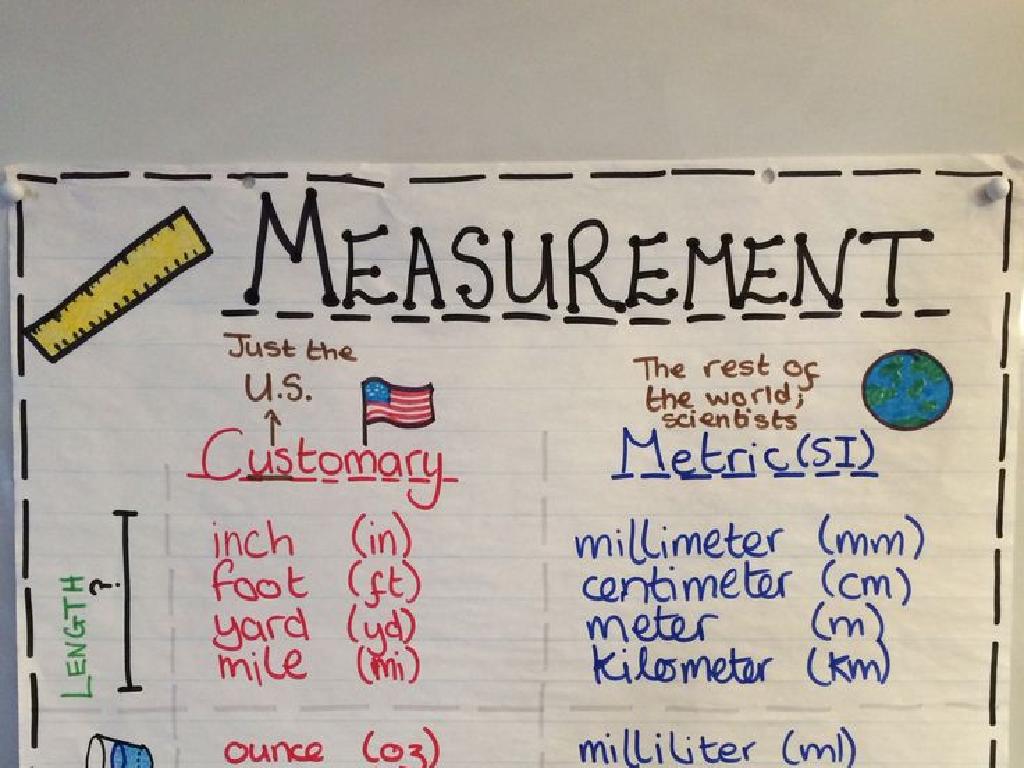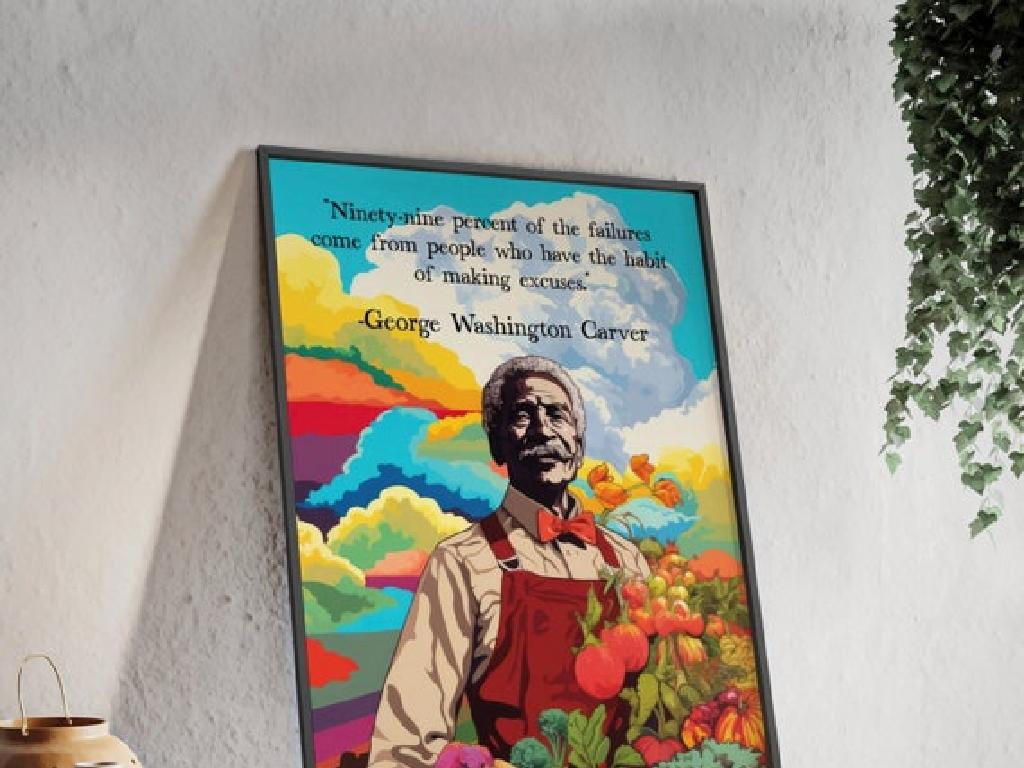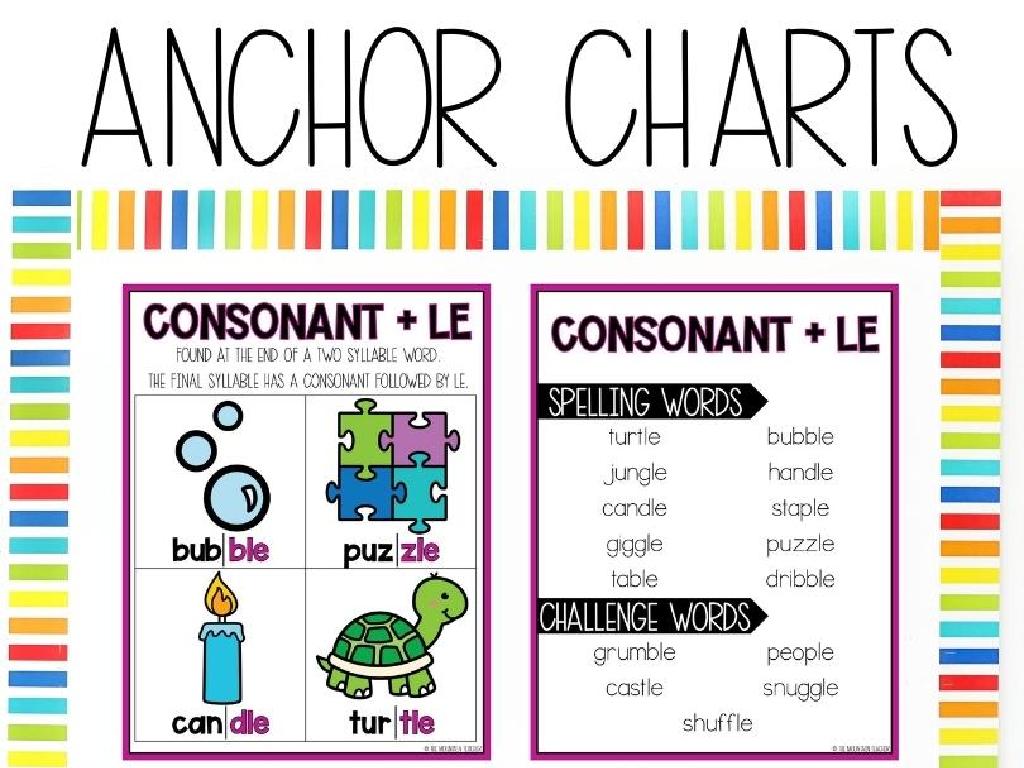Probability Of Simple Events
Subject: Math
Grade: Seventh grade
Topic: Probability
Please LOG IN to download the presentation. Access is available to registered users only.
View More Content
Introduction to Probability
– What is Probability?
– Probability measures the chance of an event occurring.
– Defining Probability Mathematically
– The likelihood of an event, expressed as a ratio of favorable outcomes to total possible outcomes.
– Probability in Everyday Life
– Examples: Chance of rain, winning a game, drawing a red card from a deck.
– Calculating Simple Probabilities
– Use the formula P(E) = Number of favorable outcomes / Total number of possible outcomes.
|
Begin the lesson by explaining probability as a measure of how likely an event is to occur. Use relatable examples to show that probability is a part of everyday decision-making. Introduce the mathematical definition of probability and ensure students understand terms like ‘favorable outcomes’ and ‘total possible outcomes.’ Provide real-life scenarios where calculating the probability is useful, such as weather forecasts or games. Teach students the basic formula for calculating the probability of simple events and encourage them to think of other examples where they could apply this concept.
Understanding the Probability Scale
– Probability scale range: 0 to 1
– ‘Impossible’ event: Probability 0
– An event that cannot happen, e.g., rolling a 7 on a standard die
– ‘Certain’ event: Probability 1
– An event that is sure to happen, e.g., getting heads or tails when flipping a coin
– Examples of varying probabilities
– ‘Unlikely’ might be winning a lottery, ‘Even chance’ is flipping heads, ‘Likely’ could be drawing a red card from a deck
|
This slide introduces students to the concept of the probability scale, which ranges from 0 (impossible events) to 1 (certain events). Provide clear definitions and examples for each type of event to help students grasp the concept. For instance, an impossible event has no chance of happening, while a certain event is guaranteed to occur. Discuss examples like the likelihood of different outcomes when rolling dice, flipping coins, or drawing cards from a deck. Encourage students to think of their own examples and understand that probability is a way to measure the chance of an event occurring.
Understanding Simple Events in Probability
– Define a Simple Event
– A single outcome from a probability experiment
– Examples of Simple Events
– Flipping a coin (Heads or Tails), Rolling a die (landing on 4)
– Calculate Simple Event Probability
– Use formula P(E) = Number of favorable outcomes / Total possible outcomes
– Practice Problems
|
This slide introduces the concept of simple events in the context of probability. A simple event is an event where only one outcome is possible, such as flipping a coin or rolling a single die. Provide clear examples to illustrate the concept. Then, explain how to calculate the probability of a simple event using the formula P(E), where ‘E’ represents the event. Emphasize that the total possible outcomes must consider all the different outcomes that could possibly occur in the experiment. Conclude with practice problems to reinforce the concept, such as determining the probability of drawing a certain card from a deck or landing on a specific color in a spinner. Encourage students to think of other simple events and calculate their probabilities.
Calculating Probability of Simple Events
– Understand Probability Formula
– P(Event) = Favorable outcomes / Total outcomes
– Count favorable outcomes
– If flipping a coin, 1 favorable outcome for heads
– Count possible outcomes
– Total outcomes for coin flip: 2 (heads or tails)
– Calculate probability with examples
– Example: Probability of heads = 1/2 or 50%
|
This slide introduces the fundamental formula for calculating the probability of simple events. Start by explaining the probability formula, emphasizing the terms ‘favorable outcomes’ and ‘total possible outcomes.’ Use tangible examples like flipping a coin or rolling a die to illustrate these concepts. For instance, when flipping a coin, there is one favorable outcome for getting heads and two possible outcomes in total (heads or tails). Therefore, the probability of getting heads when flipping a coin is 1 out of 2, or 50%. Encourage students to apply this formula to various scenarios to solidify their understanding.
Probability Practice: Solving Problems
– Work on practice problems
– We’ll solve problems as a class activity
– Discuss problem-solving strategies
– Steps: Identify possible outcomes, count favorable ones
– Understand probability concepts
– Probability is the chance of an event occurring
– Apply knowledge to new situations
– Use strategies learned to solve different problems
|
This slide is aimed at reinforcing the students’ understanding of probability through hands-on practice. Start by working through problems as a class to demonstrate problem-solving strategies. Emphasize the importance of identifying all possible outcomes and how to count the favorable ones to determine the probability. Discuss the concept of probability as the likelihood of an event happening. Encourage students to apply the knowledge and strategies they’ve learned to new situations or problems. Provide a variety of practice problems that cater to different levels of difficulty to ensure all students are engaged and challenged.
Class Activity: Probability with Dice
– Roll dice to find probabilities
– Calculate probability of a specific number
If a die is rolled, what’s the chance of rolling a 4? Remember, a die has 6 sides.
– Discuss outcomes with the class
– Compare observed & theoretical probabilities
How does the actual rolling compare to the expected 1/6 chance for each number?
|
This interactive activity is designed to help students understand the concept of probability through a hands-on experience. Provide each student or group with a die and have them roll it multiple times, recording the outcome of each roll. They should calculate the experimental probability of rolling a specific number and then discuss their findings with the class. Facilitate a group discussion on the difference between their observed probabilities and the theoretical probability of 1/6. This will help them grasp the idea of probability in a practical and engaging way. Possible variations of the activity could include rolling two dice to explore combined probabilities, or predicting the outcomes before rolling to discuss expectations versus reality.
Homework: Mastering Simple Event Probability
– Practice with assigned problems
– Explore recommended readings
– Check out ‘Understanding Probability’ by Henk Tijms for a deeper dive
– Understand probability concepts
– Focus on how likely an event is to occur
– Prepare for next class discussion
|
For homework, students should complete the set of problems provided, which are designed to reinforce their understanding of simple event probability. Encourage them to read additional material, such as ‘Understanding Probability’ by Henk Tijms, to gain a more in-depth perspective on the topic. The homework will help solidify the concepts discussed in class, such as defining probability as a measure of how likely an event is to occur, and calculating it for simple events. In the next class, be prepared to discuss the homework problems and any insights gained from the reading to ensure a comprehensive grasp of probability.
Wrapping Up: Probability of Simple Events
– Recap of probability basics
– Review examples of simple events
– e.g., flipping a coin or rolling a die
– Encourage questions from students
– What did you find most interesting?
– Clarify any doubts
– Let’s address any confusion before we finish.
|
As we conclude today’s lesson on the probability of simple events, it’s important to revisit the key points we’ve covered. Start by summarizing the basic concepts of probability, ensuring students understand the likelihood of an event occurring. Review the examples of simple events we’ve discussed, such as the outcomes of a coin toss or a dice roll. Open the floor for students to ask any questions they may have or to seek clarification on any part of the lesson they found challenging. Encourage active participation and remind them that there are no wrong questions. Address any misconceptions or uncertainties, and provide additional examples if necessary to ensure all students leave the class with a clear understanding of today’s material.





